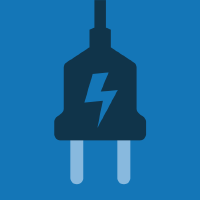Topic Editors


EMC and Reliability of Power Networks
Topic Information
Dear Colleagues,
The global push towards net zero is placing a greater emphasis on energy quality, integrity, security and resilience than ever before as renewable electricity, largely from photovoltaic solar and wind sources, is growing to both provide the much-needed additional energy capacity as well as replace existing fossil fuels.
This process is leading a (r)evolution of modern power distribution and transmission networks in both network topology, as HVDC becomes more prominent and needs to coexist within a heterogeneous transmission system, and in operating procedures with the introduction of new technologies, new sophisticated control schemes, information communication technology (ICT) systems, etc.
EMC plays an essential role in defining the energy quality and systems’ reliability as there are many aspects of the network that can create, or be susceptible to, EMI. Modern networks are subject to a wide range of disturbances, both natural, such as lightning strikes and faults induced by weather conditions (ice, falling trees, storms), and human-made, due to switching devices and intentional electromagnetic interference (IEMI).
These disturbances can lead to effects ranging from sensitive load damage and insulation deterioration, and even to power supply interruption and blackout.
It is clear that the electromagnetic environment of power networks is becoming increasingly complex, with new challenges that need addressing. This Topic will address EMI issues in power transmission systems in the widest sense, including issues of noise coupling, partial discharge events, non-linearities between different parts of a network, and challenges to controlling and monitoring systems. Papers addressing issues of fundamental theory, modelling, mitigation, monitoring, detection, or specific case studies will be of particular interest.
Topics of interest for this Topic include but are not limited to:
- Simulation of power transmission line electromagnetic transients;
- New modelling techniques in the frequency and time domain to simulate power networks involving phenomena with a wide range of frequencies;
- Co-simulation of transmission–distribution–communication models;
- Aging of structures due to electrical and mechanical stress;
- Fault location techniques;
- Partial discharge location techniques;
- HVDC and HVAC networks;
- Online power network diagnosis and monitoring techniques;
- EMI and IEMI;
- Lightning strikes.
Dr. Alistair Duffy
Topic Editors
Keywords
- numerical modelling
- computational electromagnetics
- EMC
- EMI
- IEMI
- reliability
- electricity security
- fault detection
- HVDC
- HVAC
- power transmission line
- multi-physics simulations
- partial discharge
- network monitoring
Participating Journals
| Journal Name | Impact Factor | CiteScore | Launched Year | First Decision (median) | APC | |
|---|---|---|---|---|---|---|

Energies
|
3.2 | 5.5 | 2008 | 16.1 Days | CHF 2600 | Submit |

Sensors
|
3.9 | 6.8 | 2001 | 17 Days | CHF 2600 | Submit |

Electronics
|
2.9 | 4.7 | 2012 | 15.6 Days | CHF 2400 | Submit |

Modelling
|
- | - | 2020 | 15.8 Days | CHF 1000 | Submit |

Electricity
|
- | - | 2020 | 20.3 Days | CHF 1000 | Submit |

MDPI Topics is cooperating with Preprints.org and has built a direct connection between MDPI journals and Preprints.org. Authors are encouraged to enjoy the benefits by posting a preprint at Preprints.org prior to publication:
- Immediately share your ideas ahead of publication and establish your research priority;
- Protect your idea from being stolen with this time-stamped preprint article;
- Enhance the exposure and impact of your research;
- Receive feedback from your peers in advance;
- Have it indexed in Web of Science (Preprint Citation Index), Google Scholar, Crossref, SHARE, PrePubMed, Scilit and Europe PMC.

